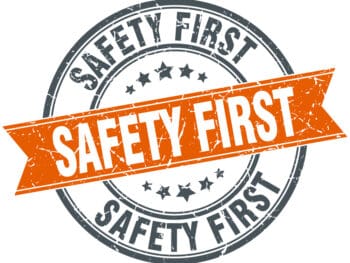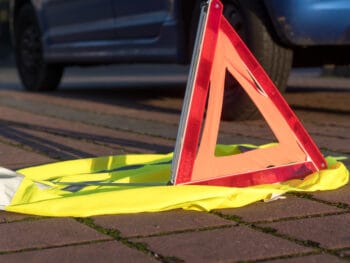Electrical hazards can cause burns, shocks and electrocution. Having a comprehensive electrical safety program is the key way to prevent electrical workplace injuries and fatalities. Electrical injuries are some of the most severe and preventable workplace injuries. Keeping facilities and electrical equipment in good repair should be of paramount concern to every cost aware employer. Saving money by not fixing faulty electrical building systems or equipment can result in huge workers’ compensation and fire-related building costs when a preventable accident occurs.
Click Link to Access Free PDF Download
“4-Step Sequence For Effective Employee Screening, Hiring, & Placement”
Here are some easy tips to prevent electrical accidents:
• Always use caution when working near electricity.
• Never operate electrical equipment while standing in water.
ELECTRICAL CORDS AND OUTLETS
• Do not run extension cords across doorways or under carpets.
• Have additional circuits or outlets added by a qualified electrician. Avoid using extension cords.
• Avoid overloading outlets. Plug only one high-wattage appliance into each receptacle outlet at a time.
• Replace or repair damaged or loose electrical cords.
• If outlets or switches feel warm, or there are frequent problems with blowing fuses, tripping circuits or flickering or dimming lights, call a qualified electrician.
• Have ground fault circuit interrupters (GFCIs) in kitchens, bathrooms, laundry, basement and outdoor areas.
APPLIANCES AND EQUIPMENT
• Follow manufacturers’ instructions for appliances.
• Place lamps on level surfaces, away from things that can burn. Use bulbs that match the recommended wattage.
• Cover bare bulbs.
• Never operate electrical equipment while standing in water.
• Never repair electrical cords or equipment unless qualified and authorized.
• Have a qualified electrician inspect electrical equipment that has gotten wet before energizing it.
• Before working in damp locations, inspect electric cords and equipment to ensure that they are in good condition and free of defects. Use a GFCI.
OVERHEAD WIRES
• Never touch a fallen overhead power line. Call the electric utility company to report fallen electrical lines.
• Assume that all overhead wires are energized at lethal voltages. Never assume that a wire is safe to touch even if it appears to be insulated.
• Stay at least 10 feet away from overhead wires. If working at heights or handling long objects, inspect the area for the presence of overhead wires before starting work.
• If an overhead wire falls across your vehicle, stay inside the vehicle and drive away from the line. If the engine stalls, do not leave your vehicle. Warn people not to touch the vehicle or the wire. Call the local electric utility company and emergency services.
Where to get more information:
The Electrical Safety Foundation International (ESFI) is a 501(c)(3) organization that promotes electrical safety. They recommend the following steps to ensure that your safety program addresses electrical safety:
Step 1: Awareness
Make sure that safe electrical practices are known to and vital to everyone in your business.
Step 2: Assessment
Make sure that your company’s electrical safety program is up-to-date and comprehensive. They have an Electrical Safety Self Assessment tool that will help you review and analyze your company’s electrical safety practices related to facilities, personnel and procedures.
Step 3: Improvement
After you identify areas that need to be addressed, make sure to follow up on the improvements that need to be made. See more at: http://www.esfi.org/index.cfm/pid/12386#sthash.xxkspphT.dpuf
Also, OSHA has more information available at: https://www.osha.gov/Publications/electrical_safety.html
Author Rebecca Shafer, JD, President of Amaxx Risk Solutions, Inc. is a national expert in the field of workers compensation. She is a writer, speaker, and publisher. Her expertise is working with employers to reduce workers compensation costs, and her clients include airlines, healthcare, printing/publishing, pharmaceuticals, retail, hospitality, and manufacturing. She is the author of the #1 selling book on cost containment, Workers Compensation Management Program: Reduce Costs 20% to 50%. Contact:RShafer@ReduceYourWorkersComp.com.
Editor Michael B. Stack, CPA, Principal, Amaxx Risk Solutions, Inc. is an expert in employer communication systems and part of the Amaxx team helping companies reduce their workers compensation costs by 20% to 50%. He is a writer, speaker, and website publisher. www.reduceyourworkerscomp.com. Contact: mstack@reduceyourworkerscomp.com.
©2014 Amaxx Risk Solutions, Inc. All rights reserved under International Copyright Law.
WORK COMP CALCULATOR: http://www.LowerWC.com/calculator.php
MODIFIED DUTY CALCULATOR: http://www.LowerWC.com/transitional-duty-cost-calculator.php
WC GROUP: http://www.linkedin.com/groups?homeNewMember=&gid=1922050/
SUBSCRIBE: Workers Comp Resource Center Newsletter
Do not use this information without independent verification. All state laws vary. You should consult with your insurance broker, attorney, or qualified professional.







